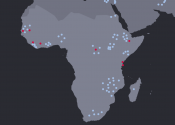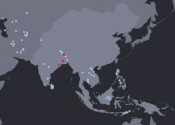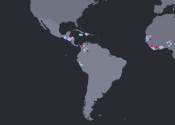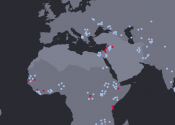Speeches Shim
Africa
The United States has an unwavering and longstanding commitment to Africa.
We engage African countries early and often as partners in pursuing our shared interests and values – from security, global health, climate change, freedom and democracy, and shared prosperity.
We have an interest in Africa’s success and sustainable development; we want to be partners in creating climate-friendly trade that secures good livelihoods for both African and American workers.
Asia
How Asia develops is critical to U.S. economic and security interests. Never before have our fates been so intertwined, especially in matters of health and the economy, as COVID-19 has proven. Asia is home to 4.7 billion people—over sixty percent of the human population—and half of the global economy, and its decisions and development trajectory will affect the world for generations.
Europe and Eurasia
Having emerged from decades of authoritarian rule, most of Europe and Eurasia
Latin America and the Caribbean
Many Latin American and Caribbean (LAC) nations have experienced monumental growth and change in the past several decades, and USAID has partnered with these countries to make important progress. Despite the global financial crisis, the region averaged a three percent annual increase in economic growth between 2000 and 2012. Health indicators have greatly improved in the region: for example, maternal mortality has fallen from 140 to 81 deaths per 100,000 live births since 1990. Political advances have been notable, as well: free elections, vibrant civil society, and responsive governments are mostly the norm.
Middle East
Ten years after the Arab Spring, progress on democratic and economic reform is uneven across the Middle East and North Africa. There remains significant instability and social unrest in some countries while others, although relatively stable, face significant development challenges as well as negative impacts of both the COVID pandemic and on-going conflicts in neighboring countries. Despite popular protests in a number of countries, economic and political reforms are not yet broadly accepted by leaders as essential to national stability and prosperity.
Last updated: October 26, 2022






Comment
Make a general inquiry or suggest an improvement.